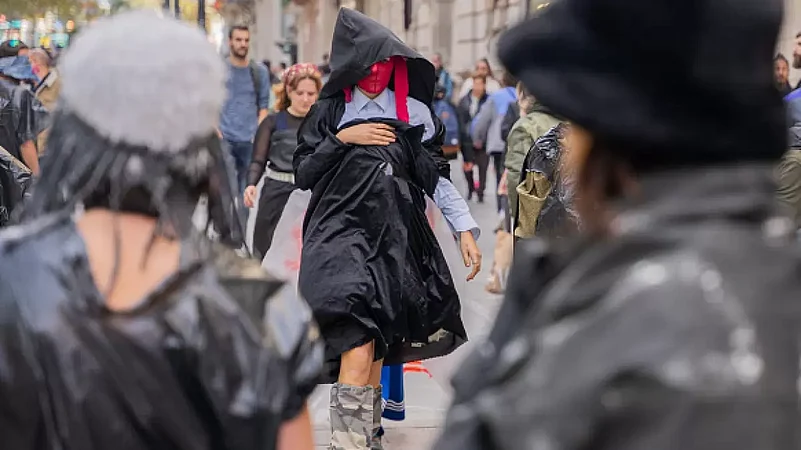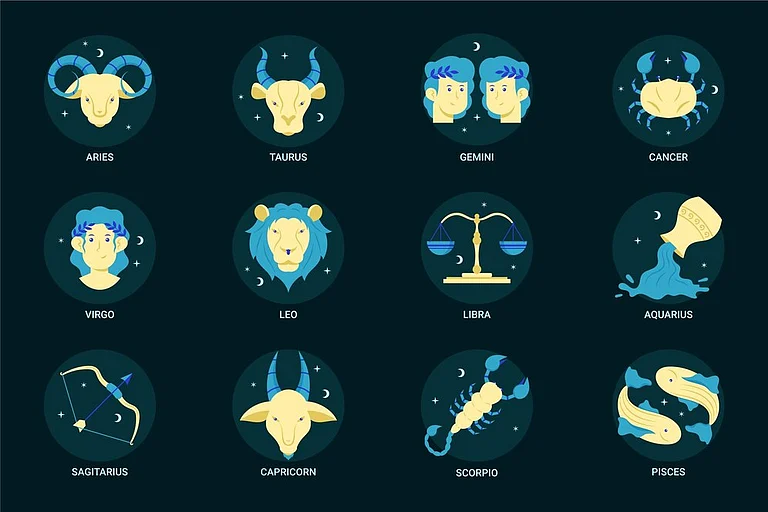Fashion and controversies often go hand-in-hand, with many incidents having tainted the industry’s glamourous image over the course of decades. Beneath the glitzy facade, some of the world’s biggest fashion brands have been found to be associated with grievous human rights exploitations, bringing the real picture to the fore.
At present, the Spanish fashion giant Zara finds itself in the middle of a raging storm, with its latest campaign featuring broken cardboard and mannequins shrouded in white plastic mimicking limbless corpses. This unsettling depiction hits too close to home, echoing the ongoing war in Gaza marked by extensive destruction, bombings, violence, and loss of life.
Zara's campaign, 'The Jackets' sparked massive protests online leading to the hashtag #BoycottZara trending on social media. The fashion brand eventually withdrew the campaign, apologising for the "misunderstanding".
In their apology, Zara explained that the controversial campaign for their Atelier line was conceptualized in July and photographed in September. They clarified that the campaign aimed to present a series of images featuring unfinished sculptures in a sculptor's studio, emphasising that its sole purpose was to showcase craft-made garments within an artistic context.
This is not the first time a fashion brand has been embroiled in controversy. Over the years, numerous “creative” attempts in fashion campaigns have raised eyebrows.
In 2010, Vogue Italia stirred controversy with a fashion story inspired by the Gulf of Mexico oil spill, shot by Steven Meisel. While in 2018, Dolce & Gabbana faced criticism for a Shanghai fashion show promo featuring a Chinese model struggling to eat Italian dishes with chopsticks.
In 2018, the Italian luxury brand Prada faced backlash, and later issued an apology and removed some of their products from sale, due to criticism of its Pradamalia line for incorporating blackface elements.
Last year, Balenciaga came under fire for an ad featuring a child model with a teddy bear wearing leather and chains, as well as another with legal documents related to child pornography.
Beyond controversial campaigns, the insensitivity and inhumane practices extend to the core of fast fashion. Brands like H&M, along with many others, have in the past faced criticism for creating unfavourable working conditions particularly in South Asian countries like Bangladesh.
As fast fashion is on the rise with clothes being churned out at breakneck speed in a race to bring the latest runway styles to the shelves, it often comes at the expense of ethical production and environmental sustainability.
The excessive consumption and throwaway mentality of fast fashion labels have contributed to exploitative work conditions, meagre wages, extended working hours, and health and safety hazards for garment workers.
Workers in the garment industry often earn a minimum wage that falls significantly below a living wage, compelling them to work for extended hours in exchange for modest wages.
The Guardian's investigation into Burmese factories producing jeans for Tesco's outlets in Thailand last year, revealed workers trapped in effective forced labor, enduring 99-hour workweeks for illegally low pay in deplorable conditions. Employees reported earning as little as £3 a day for working from 8 am to 11 pm, with instances of serious injuries, threats, and verbal abuse from factory managers to meet targets and work overtime.
According to another study by Aberdeen University and Transform Trade, about 1000 Bangladeshi factories were surveyed and it was found that major international fashion brands, including Zara, H&M and GAP were involved in unfair practices and paying the suppliers below the cost of production.
More than half of the clothing factories experienced order cancellations, refusal to pay, price reductions or delayed payment for goods.
The garment workers have long been subjected to poor working conditions. The tragic Rana Plaza incident in 2013 was a wake up call, signaling the urgent need for improved workplace settings.
On April 24, 2013, Rana Plaza - an eight-storey building in Dhaka that housed numerous garment factories came crashing down, killing 1,134 people and leaving thousands more injured. Despite the discovery of structural cracks a day earlier, garment factory owners had pressured workers to return. The incident exposed the harsh reality of the kind of conditions garment workers have to work in.
The fast fashion industry also takes a toll on the environment and contributes negatively to climate change. Increased production is found to have caused a rise in carbon emissions and other ecological harms, and generated enormous clothing waste.


























